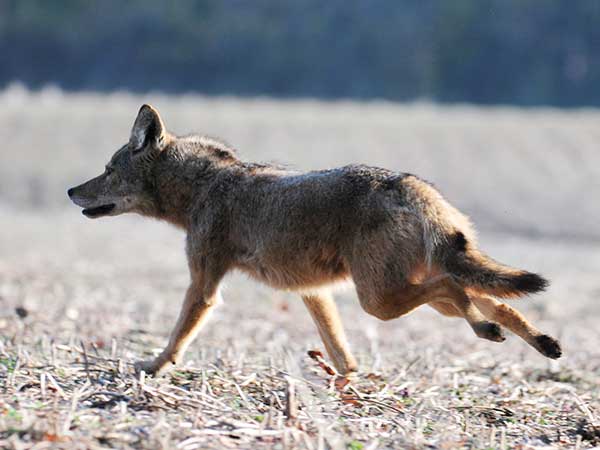- Details
(Provided by Indiana DNR)
 Coyotes adjust to landscape, including urban areas.Personal experiences shape our attitudes toward most wildlife. This is especially true for coyotes.
Coyotes adjust to landscape, including urban areas.Personal experiences shape our attitudes toward most wildlife. This is especially true for coyotes.
Thoughts range from worthless varmint that should be removed completely to a beautiful creature deserving of protection.
One thing for sure - Indiana is coyote country.
Coyotes are a native species once limited to the prairie regions of western Indiana. Reports of coyotes in Indiana began to increase in the 1970s.
They have adjusted to the landscape changes and now are common in all Indiana counties, including many urban areas. For some Hoosiers, this is old news. For others, the sight of a coyote is new and little is known about how to live with this species.
- Details
Select Indiana state parks will close temporarily to allow for controlled deer reductions in the coming weeks.
The dates for the temporary closings are Nov. 17 and 18, and Dec. 1 and 2.
The state parks affected are Brown County, Chain O'Lakes, Charlestown, Clifty Falls, Fort Harrison, Harmonie, Indiana Dunes, Lincoln, McCormick's Creek, Ouabache, Pokagon, Potato Creek, Prophetstown, Shakamak, Spring Mill, Summit Lake, Tippecanoe River and Whitewater Memorial.
These state parks will close to the general public the evening before each of the two efforts and reopen the morning after each two-day reduction.
Only individual hunters drawn last September and those hunters they listed on their applications may participate at Brown County, Chain OíLakes, Charlestown, Clifty Falls, Harmonie, Lincoln, McCormickís Creek, Ouabache, Pokagon, Potato Creek, Prophetstown, Shakamak, Summit Lake, Tippecanoe River and Whitewater Memorial. There will be no standby drawings at those parks.
- Details
(Provided by Indiana DNR)
Less than 1 percent of Indianaís nearly 400,000 hunters are found to be violating the law while hunting.
Finding those violators often requires the input of law-abiding hunters and other citizens who see violations taking place.
Now that Hoosier hunting seasons are in full swing, the Indiana Conservation Officers charged with enforcing the stateís wildlife laws ask concerned citizens to keep two phone numbers handy and enter them on their cell phones. The 24-hour Central Dispatch number is (812) 837-9536. It documents the callerís name. The Turn in a Poacher (TIP) hotline number is 1-800-TIP-IDNR (4367). It allows the caller to remain anonymous.
- Details
(Provided by Indiana DNR)
A new DNR Web page makes it easy to find everything you need to know about white-tailed deer in Indiana.
Deer.dnr.IN.gov, is a one-stop-shop for information on deer hunting, deer biology, how to respond to nuisance deer, the stateís deer management strategy, scientific reports on topics such as harvest trends and disease, and more.
- Details
(Provided by Indiana DNR)
A program that allows hunters to give deer meat to the public will continue again this fall.
GiveIN Game, the DNR Division of Fish & Wildlifeís venison donation program, will be available for its fourth year. Hunters who are willing to donate venison and people who would like to receive venison can begin registering on Sept. 1 at www.wildlife.IN.gov/7240.htm.
GiveIN Game makes it easy for people to connect and set up a free exchange on their own schedule. Selling, bartering or trading for venison is illegal.
After several years of watching the program grow, Chad Stewart, DNR's deer management biologist, decided to donate venison himself.
"The system was incredibly easy to use, and I found the interaction with people needing venison highly rewarding," he said. "They were incredibly grateful, and Iím looking forward to participating again next year."The program had 675 participants last year, with the number of people requesting venison more than five times greater than those offering to donate venison.
Both hunters and recipients have an option of donating or requesting any amount of venison in all conditions, from field-dressed animals to packaged venison.
"GiveIN Game is a unique program that allows hunters to donate wild game in a non-traditional way," said Mark Reiter, DNR Fish & Wildlife director. "While many other programs focus on food banks and charitable organizations distributing venison to needy families, GiveIN Game provides a new avenue for those that enjoy venison but do not have the opportunity to harvest the deer themselves."
Previous participants must re-register every year, if they want to continue participating.


